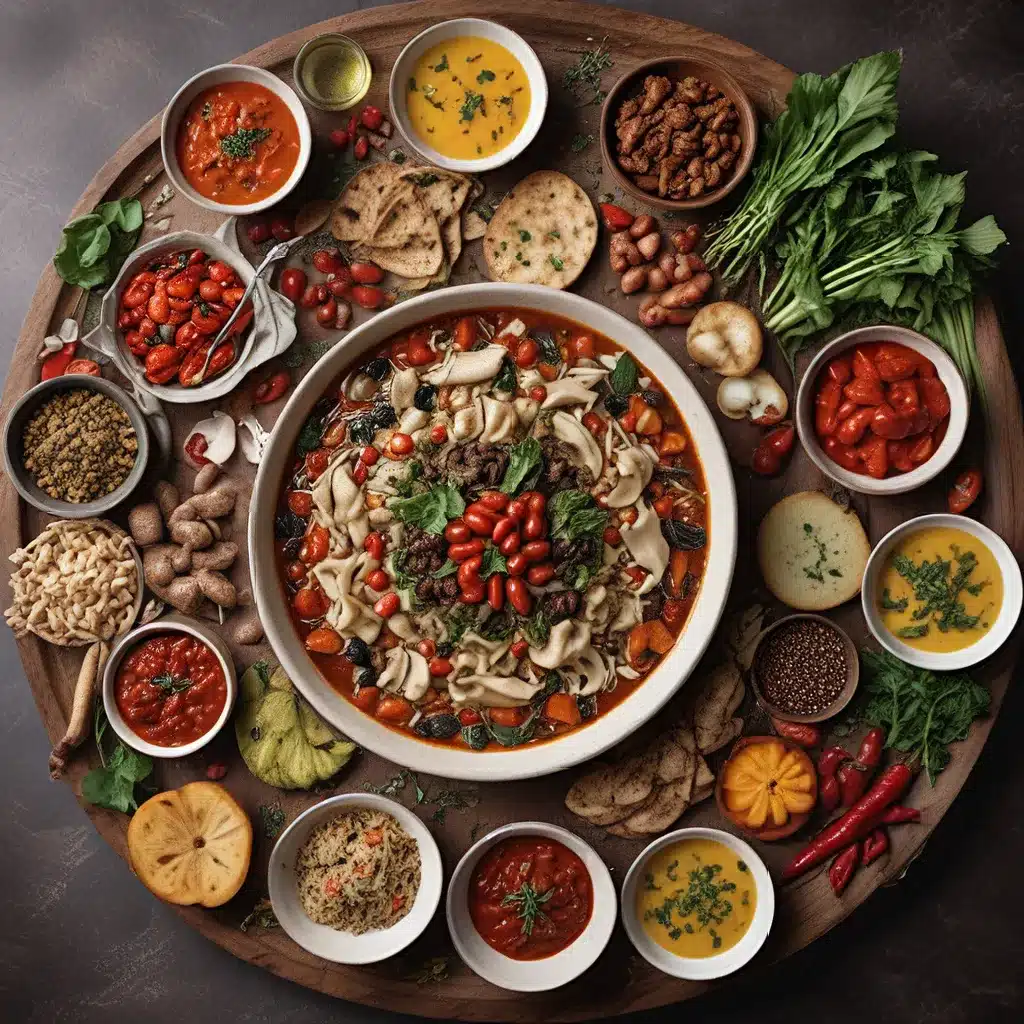
Exploring the Fascinating World of Fusion Cuisine
As a food enthusiast, I’ve always been captivated by the incredible diversity of the culinary landscape. From the vibrant flavors of Thai street food to the delicate artistry of French pastries, each cuisine tells a story of its unique cultural heritage. But what happens when these culinary traditions collide? Enter the fascinating world of fusion cuisine.
Fusion cuisine is like a culinary melting pot, where chefs and home cooks alike experiment with blending ingredients, techniques, and flavors from different culinary traditions. It’s a creative expression of our increasingly globalized world, where the boundaries between cultures are becoming ever more porous.
One of the most intriguing examples of this culinary convergence can be found in the Phang Nga province of Southern Thailand. This coastal region, nestled between the Andaman Sea and lush mangrove forests, is a veritable treasure trove of diverse ingredients – from fresh seafood to abundant tropical produce. And it’s here that a captivating new trend has emerged: fusion vegetarian cuisine.
Restaurants like Seasons, located within the Aleenta Phuket Resort and Spa, are at the forefront of this culinary evolution. By blending the principles of traditional Thai cooking with elements from other culinary traditions, these chefs are creating plant-based dishes that are as flavorful and diverse as their non-vegetarian counterparts.
Embracing the Diversity of Vegetarian Cuisine
The rise of fusion vegetarian cuisine in Phang Nga is part of a broader global trend towards more plant-based diets. As people become increasingly conscious of the environmental, health, and ethical implications of their food choices, the demand for varied and delicious vegetarian options has skyrocketed.
But this shift goes beyond just the addition of a few token veggie dishes on the menu. Chefs and home cooks alike are embracing the creativity and versatility of vegetarian cooking, exploring new flavor profiles and techniques to elevate the humble plant-based meal.
Across the globe, culinary talents are rising to the challenge, blending the rich culinary heritage of their regions with innovative plant-based ingredients and methods. From the fragrant curries of Thailand to the rustic pastas of Italy, the possibilities for fusion vegetarian cuisine are endless.
The Art of Blending Flavors and Cultures
At the heart of fusion vegetarian cuisine is the harmonious blending of diverse culinary traditions. It’s a delicate balancing act that requires a deep understanding of each ingredient’s role, how flavors interact, and how cooking methods can transform a dish.
Take, for example, the concept of “Spaghetti Phad Kee Mao” – an inventive fusion dish that marries the beloved Italian pasta with the bold, spicy flavors of traditional Thai stir-fry. By expertly combining these two distinct culinary influences, chefs create a unique sensory experience that challenges the palate and defies expectations of what vegetarian cuisine can offer.
It’s this cross-cultural exchange that makes fusion vegetarian cuisine so captivating. As chefs and home cooks experiment with different ingredients and techniques, they’re not only expanding the culinary landscape but also fostering a greater understanding and appreciation of diverse food cultures.
The Benefits of Fusion Vegetarian Cuisine
The impact of fusion vegetarian cuisine extends far beyond the plate. This culinary trend holds significant implications for individual health, environmental sustainability, and cultural exchange.
From a health perspective, the integration of diverse culinary traditions means a broader range of plant-based ingredients in the diet. This variety not only keeps meals interesting and flavorful but also contributes to a balanced and nutritious diet, as different cultures offer unique plant-based nutrients.
Environmentally, fusion vegetarian cuisine supports sustainable food practices by prioritizing the use of local, seasonal produce. This reduced reliance on long-distance transportation and storage means a lower overall carbon footprint for the dishes served.
Perhaps most importantly, fusion vegetarian cuisine serves as a medium for cultural exchange and understanding. As different culinary traditions merge, diners are exposed to the rich diversity of global food cultures, sparking conversations and fostering a greater appreciation for our shared humanity.
Discovering the Culinary Crossroads
As I immerse myself in the vibrant fusion vegetarian scene of Phang Nga, I can’t help but feel a sense of wonder and excitement. This region, with its unique geographical attributes and culinary heritage, has become a gastronomic melting pot, where chefs and home cooks are pushing the boundaries of what vegetarian cuisine can be.
Whether you’re a dedicated vegetarian or a curious omnivore, the world of fusion vegetarian cuisine offers a truly remarkable dining experience. It’s a journey of discovery, where familiar flavors and unexpected combinations come together to create a symphony of textures, aromas, and sensations.
So, let’s dive into this culinary crossroads, where the boundaries between cultures blur and the possibilities for plant-based innovation are truly boundless. Who knows what delightful surprises await us on this culinary adventure?

